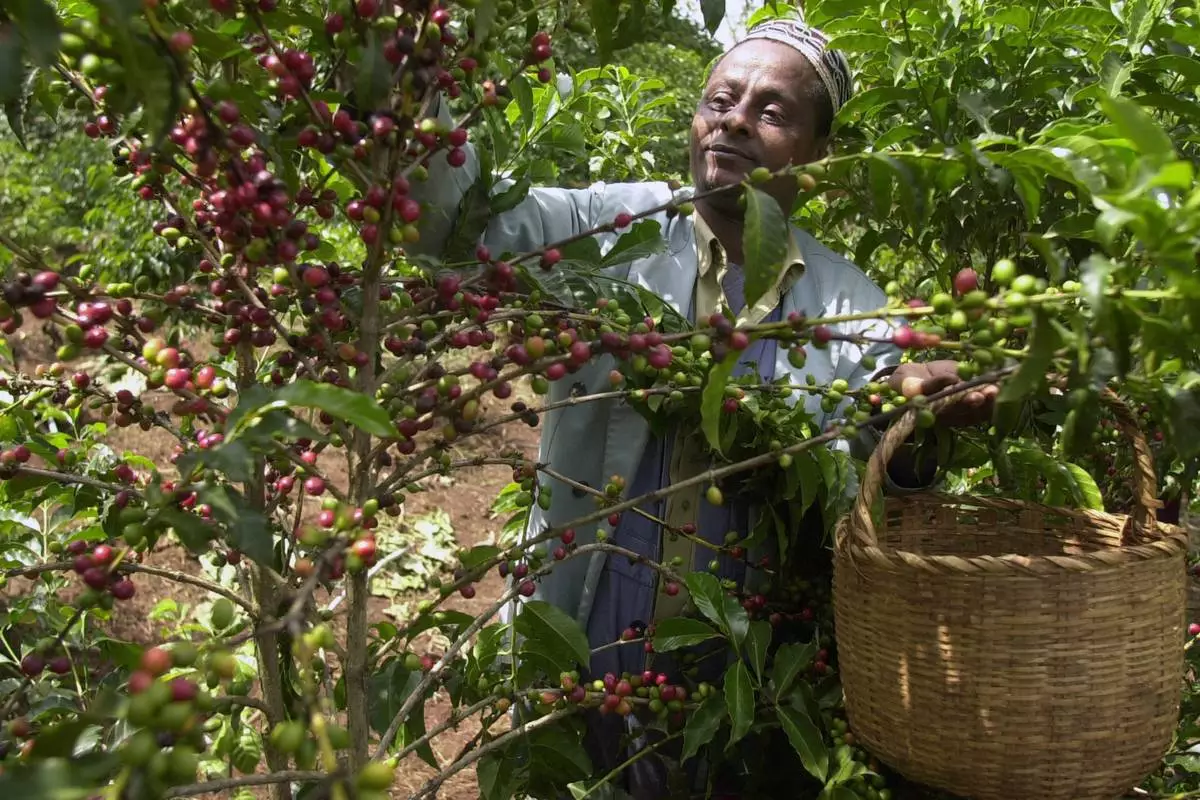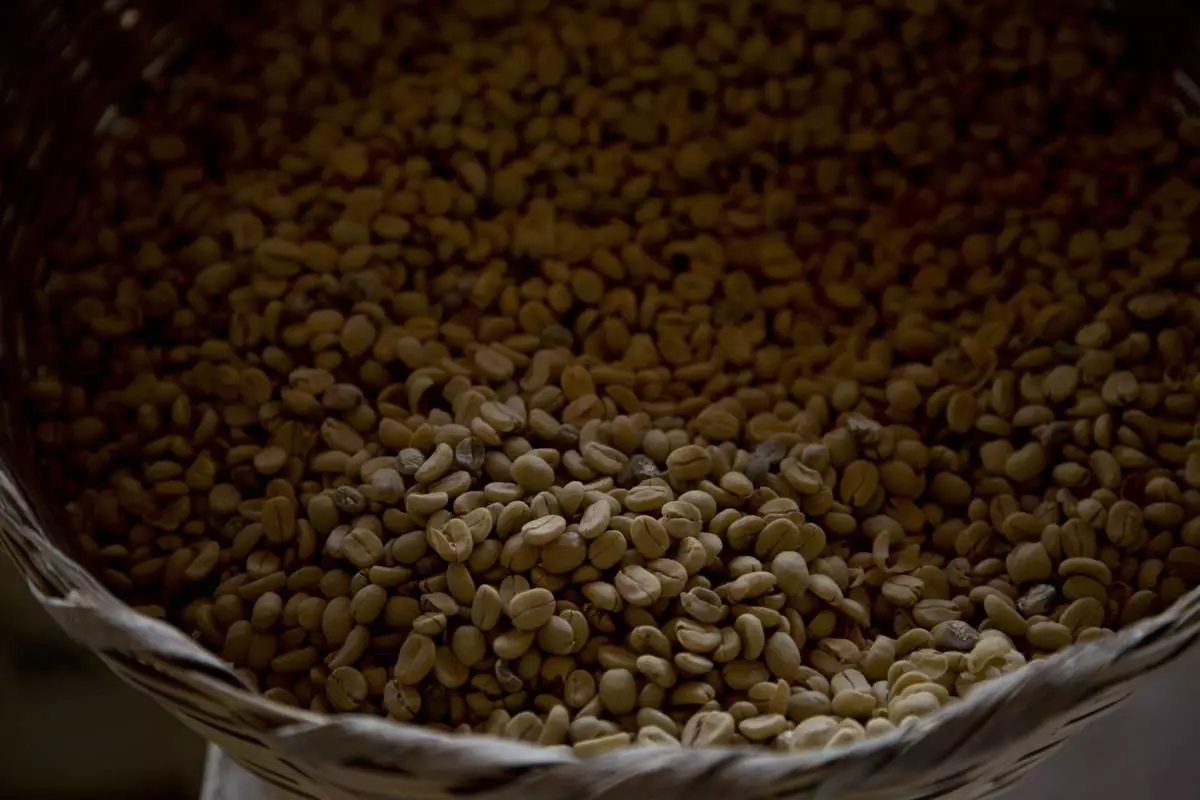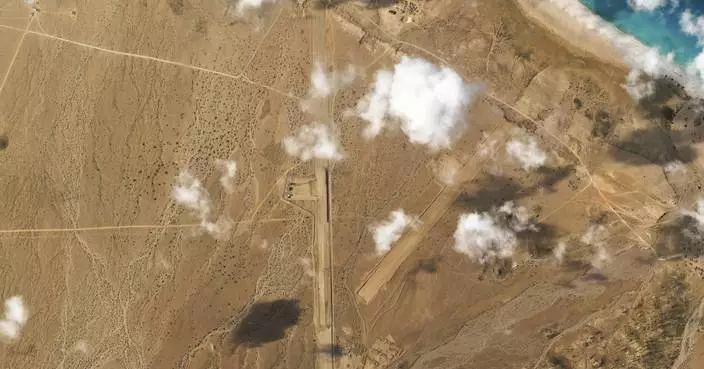Yemeni officials say the government has been forced to delay its return to the city of Aden, blaming southern separatists for stalling on the key point of a power-sharing deal signed early this month to end their infighting.
Under the agreement brokered by Saudi Arabia between Yemeni President Abed Rabbo Mansour Hadi and the separatists, backed by the United Arab Emirates, the government was to have returned to Aden last Tuesday.
The separatists pushed government forces out and captured Aden during summer clashes.

In this photo released by the Saudi Royal Palace, Yemeni Southern Transitional Council member and former Aden Governor Nasser al-Khabji, left, and Yemen's deputy Prime Minister Salem al-Khanbashi sign a power-sharing deal in Riyadh, Saudi Arabia, Tuesday, Nov. 5, 2019. Yemen's internationally recognized government signed a power-sharing deal with Yemeni separatists that are backed by the United Arab Emirates. A picture of Saudi Arabia's founder late King Abdul Aziz Al Saud hangs on wall. (Bandar AljaloudSaudi Royal Palace via AP)
The officials say the separatists refuse to hand over government facilities and insisting on joint committees. The officials spoke Sunday on condition of anonymity because they weren’t authorized to talk to reporters.
The infighting between government forces and separatists added another layer to Yemen’s complex civil war.

In this photo released by the Saudi Royal Palace, Yemen's president, Abed Rabbo Mansour Hadi, center, is accompanied by Saudi Arabia's Crown Prince Mohammed bin Salman, right, and Dhabi's crown prince, Mohammed bin Zayed Al Nahyan before signing a power-sharing deal in Riyadh, Saudi Arabia, Tuesday, Nov. 5, 2019. Yemen's internationally recognized government has signed a power-sharing deal with Yemeni separatists that are backed by the United Arab Emirates. The deal aims to halt months of infighting between the two groups. (Bandar AljaloudSaudi Royal Palace via AP)
That coffee you slurped this morning? It’s 600,000 years old.
Using genes from coffee plants around the world, researchers built a family tree for the world's most popular type of coffee, known to scientists as Coffea arabica and to coffee lovers simply as “arabica.”
The researchers, hoping to learn more about the plants to better protect them from pests and climate change, found that the species emerged around 600,000 years ago through natural crossbreeding of two other coffee species.
“In other words, prior to any intervention from man,” said Victor Albert, a biologist at the University at Buffalo who co-led the study.
These wild coffee plants originated in Ethiopia but are thought to have been first roasted and brewed primarily in Yemen starting in the 1400s. In the 1600s, Indian monk Baba Budan is fabled to have smuggled seven raw coffee beans back to his homeland from Yemen, laying the foundation for coffee’s global takeover.
Arabica coffee, prized for its smooth and relatively sweet flavor, now makes up 60% - 70% of the global coffee market and is brewed by brands such as Starbucks, Tim Horton's and Dunkin'. The rest is robusta, a stronger and more bitter coffee made from one of arabica's parents, Coffea canephora.
To piece together arabica coffee’s past, researchers studied genomes of C. canephora, another parent called Coffea eugenioides, and more than 30 different arabica plants, including a sample from the 1700s — courtesy of the Natural History Museum in London — that Swedish naturalist Carl Linnaeus used to name the plant.
The study was published Monday in the journal Nature Genetics. Researchers from Nestlé, which owns several coffee brands, contributed to the study.
The arabica plant’s population fluctuated over thousands of years before humans began cultivating it, flourishing during warm, wet periods and suffering through dry ones. These lean times created so-called population bottlenecks, when only a small number of genetically similar plants survived.
Today, that renders arabica coffee plants more vulnerable to diseases like coffee leaf rust, which cause billions of dollars in losses every year. The researchers explored the makeup of one arabica variety that is resistant to coffee leaf rust, highlighting sections of its genetic code that could help protect the plant.
The study clarifies how arabica came to be and spotlights clues that could help safeguard the crop, said Fabian Echeverria, an adviser for the Center for Coffee Research and Education at Texas A&M University who was not involved with the research.
Exploring arabica’s past and present could yield insight into keeping coffee plants healthy – and coffee cups full – for future early mornings.
The Associated Press Health and Science Department receives support from the Howard Hughes Medical Institute’s Science and Educational Media Group. The AP is solely responsible for all content.

FILE - Mohammed Fita picks coffee beans on his farm Choche, near Jimma, 375 kilometers (234 miles) southwest of Addis Ababa, Ethiopia, on Saturday, Sept. 21 2002. Wild coffee plants originated in Ethiopia but are thought to have been primarily roasted and brewed in Yemen starting in the 1400s. (AP Photo/Sayyid Azim, File)

FILE - Arabica coffee beans harvested the previous year are stored at a coffee plantation in Ciudad Vieja, Guatemala, on May 22, 2014. In a study published in the journal Nature Genetics on Monday, April 15, 2024, researchers estimate that Coffea arabica came to be from natural crossbreeding of two other coffee species over 600,000 years ago. (AP Photo/Moises Castillo, File)








